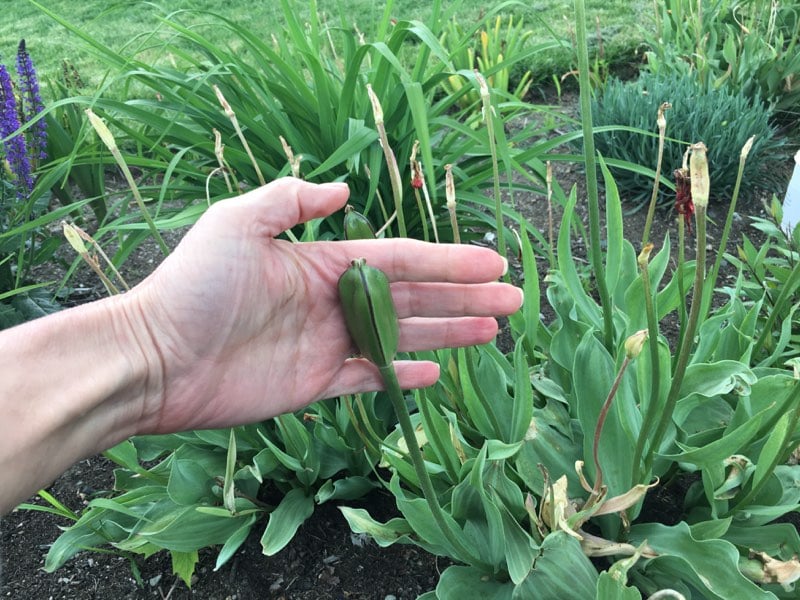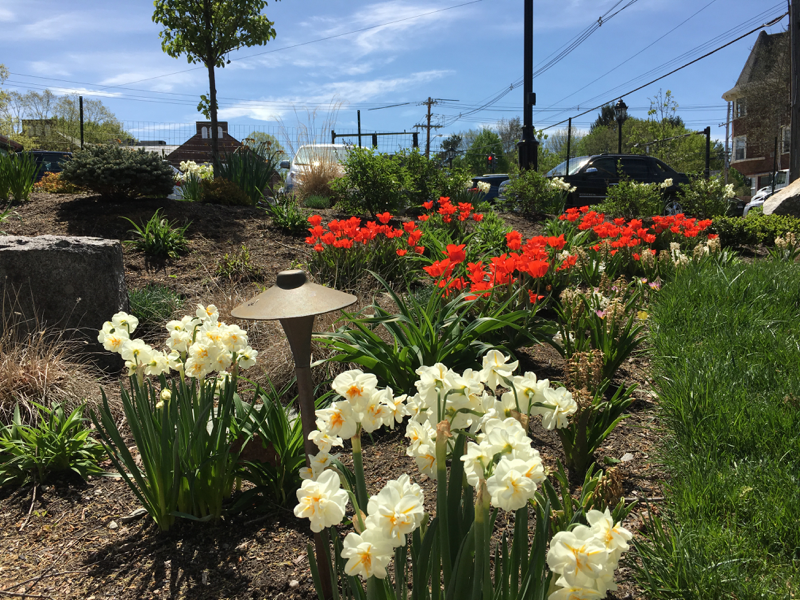Bulbs are perhaps one of the most valuable and productive friends a flower gardener can have. Cared for properly, they seem to automatically provide life and color in a bleak landscape after a hard winter. They are springtime incarnate.
But after bulbs finish flowering, there’s the ugly aftermath. Faded, collapsed petals; wilted and yellowing leaves and stems. What’s a gardener to do?
Let’s start by taking a closer look at the anatomy of bulbs to learn how to properly care for them and determine an appropriate time and technique for cleaning up that mess while still supporting the health and vitality of the bulb.
Bulbs are plants, and because of that, they have a life cycle. Admittedly, it happens to be the lifecycle of an angiosperm, but still, it’s a life and life is all about reproduction, regardless of the genus or species. So after the plant flowers, the biological job of the plant is to create seeds. But gardeners don’t want them to do that because the process of creating seeds steals energy from the bulb and it becomes weaker for next year. So as gardeners, we want to preserve the bulb health to gain a good second year out of a bulb.
Here are three key tips for keeping your plants and bulbs happy and healthy:
1. Identify the type of bulb
Bulbs are an astonishingly large category of flowers, so it’s important to know what you have so you’ll know how to care for it. Two of the most popular bulbs are tulips and narcissi (daffodils are a type of narcissi), but there are many others, such as crocus, hyacinths, camassia, scilla, lily, and fritillaria, to name a few.
2. Know when and what to deadhead
 Deadheading is the act of removing the flower parts after the plant has finished blooming. Deadheading is key for stopping the bulb from going to seed, but the trick is to remove only the flower parts and keep all the leaves intact. This is because you want the foliage to continue the work of photosynthesis in order to store energy and food in that bulb underground.
Deadheading is the act of removing the flower parts after the plant has finished blooming. Deadheading is key for stopping the bulb from going to seed, but the trick is to remove only the flower parts and keep all the leaves intact. This is because you want the foliage to continue the work of photosynthesis in order to store energy and food in that bulb underground.
How you deadhead can vary from bulb to bulb. With all the narcissi (daffodil) types, you can simply snap the head off the stalk with your thumbnail or scissors and leave the stalk intact, or you can snip the stalk off at the base leaving all the foliage untouched.

Try to avoid letting bulbs set seeds.
Tulips, however, have a different anatomy than narcissi and daffodils. When you deadhead a tulip, you want to leave the big leaves at the bottom of the flower stalk (ideally at least two). Again, this lets the plant keep up the work of food storage.
This deadheading is useful for all the big bulbs that will include the hyacinths, camassias, and lilies. For the tiny bulbs with more dainty anatomy, structure, and size such as scilla, crocus, snowdrops, and chionodoxa, you can just let them simply fade. Deadheading would just take you far too long, and the foliage of these bulbs fades fast.
3. Fertilize
If you want to naturalize bulbs – that is, encourage them to come back -- you want to make sure they have enough nutrients to help them complete the job. That means fertilizing bulbs four to six weeks before they flower. It’s important to note that not all bulbs naturalize well. Most of the narcissi/daffodils do, but tulips generally do not. A general rule of thumb is while you may get four to five years out of your daffodils, you’ll be lucky to get a strong two from your tulips.
As I mentioned at the beginning, nothing screams “springtime!” quite like a big, beautiful, colorful bouquet of flowers popping out of the post-winter ground like magic. The key is to plant your bulbs in tight groups to achieve that effect. I call it bouquet planting. You might think that spreading them out and planting them one by one will help fill in a larger space, but the effect is not nearly as visually dramatic.
Yes, bulbs are a lot of work, but the payback is tremendous. Having the patience to do the work in the fall for delayed gratification in the spring is well worth it. The kick-start of color you’ll receive after a dreary winter is absolutely uplifting.
A little parting tip…
Remember, the garden centers, nurseries, and box stores try to get you to plant your bulbs in the early fall by putting them on the shelves in late September. WAIT! If you really want to buy them, go for it. Keep them stored in a cool, dry, and dark location until you are ready to plant.
The sweet spot planting time in my area is between Halloween and Thanksgiving. It can be pretty chilly, but don’t let that deter you. I’ve planted bulbs as late as January when we’ve had a slow winter. I’ve planted them in a freezing November where we had to crack out an inch of frost to get to the pliable earth. I’ve even planted them in December through a couple of inches of snow. The point is...cold is okay for the bulbs. It may make you a little uncomfortable, but the bulbs...they’ll be more than fine.
Tweetable Tip: Tip: Catch the 411 on bulb care to help your bulbs last! https://ctt.ec/4L13H+







Leave a comment